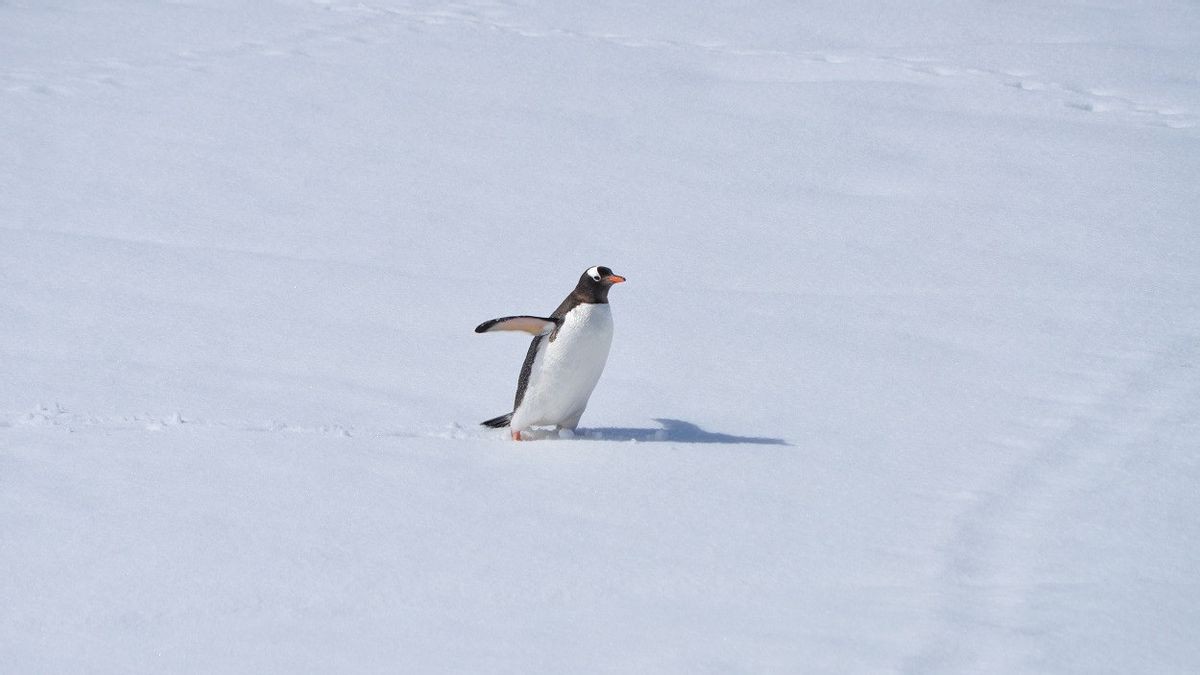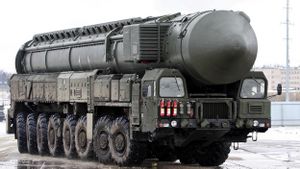JAKARTA - Peering through the binoculars of an inflatable motorboat bobbing in the frigid waters, polar ecologists Michael Wethington and Alex Borowicz scanned a rocky outcrop on Antarctica's Andersson Island, looking for splashes of red-brown guano that might signal a nearby penguin colony.
The birds have become much more than an iconic symbol of the frozen south of the earth. Scientists are now using it as a key indicator, to understand climate change near the South Pole, with certain western regions such as the Antarctic Peninsula having experienced rapid warming, while East Antarctica remains cold and ice-covered.
"We counted penguin nests to understand how many penguins in a colony produce chicks each year, and whether that number goes up or down with environmental conditions," said Borowicz, of Stony Brook University in New York.
For climate researchers, nothing comes easy in the remote, ice-covered region of Antarctica. However, penguins are easier to track than other species, as they nest on land and their black fur and droppings can be seen in white areas.

"We can use penguins as bioindicators to see how other ecosystems operate," explains Wethington, also of Stony Brook.
Simple counting of individual penguins alongside other methods, such as analysis of satellite imagery, tells a nuanced story, with some penguins being dubbed 'winners' as climate change opens up new habitats, while others are forced to seek cooler climates.
Gentoo penguins, with their bright red-orange beaks and distinctive white markings on their heads, part of the open water without the ice floes.
As temperatures on the Antarctic Peninsula began to rise faster than almost anywhere else in the world during the second half of the 20th century, the gentoo population expanded southward in what some scientists call the Antarctic "gentoofication".
"Gentoo penguins don't like sea ice," said David Ainley, a biologist with the ecological consulting firm HT Harvey & Associates who has studied penguins for more than 50 years.
"They mostly forage on the continental shelf and don't go far out to sea," he continued.

As sea ice has decreased along the west side of the peninsula, the gentoo has taken advantage of the hospitable conditions. But the same conditions were worse for the tuxedo-wearing Adelies, who depend on sea ice for breeding and foraging.
"When we find Adelie penguins, we usually know sea ice is nearby. And every time we see sea ice decreasing or disappearing altogether, we're going to see the Adelie penguin population drop substantially," Wethington said.
Although the widespread Adelie penguins are increasing in numbers overall, some populations have fallen by more than 65 percent.
On their January expedition to the region, Stony Brook scientists discovered the Adelie colony around the icy Weddell Sea, which has remained stable over the past decade.
"The peninsula may be a safe haven, as we see progress in climate change and overall warming around the world," Wethington said.

Heather Lynch, an ecologist at Stony Brook University who helped lead the expedition aboard the MV Arctic Sunrise, said the findings highlight the area's conservation value.
In 2020, a team from the British Antarctic Survey found 11 new emperor penguin colonies from satellite imagery, increasing known emperor penguin colonies by 20 percent.
But since 2016, nearly every penguin chick has died in the Halley Bay colony along the far eastern flank of the Weddell Sea, which has long been home to the world's second-largest colony of emperor penguins, with about 25,000 breeding pairs congregating each year.
Scientists suspect the 2016 El Nio event changed the dynamics of sea ice in the area, and worry the penguins as climate change increases the frequency and severity of El Nio events.
While the baby penguin deaths are not a direct result of climate change, "there is a climate change aspect to the loss," said Peter Fretwell, a geographic information scientist at the British Antarctic Survey.
The English, Chinese, Japanese, Arabic, and French versions are automatically generated by the AI. So there may still be inaccuracies in translating, please always see Indonesian as our main language. (system supported by DigitalSiber.id)









